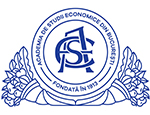Articles on Issue Theme

Matei-Ştefan NEDEF
Academia de Studii Economice din Bucureşti

Octavian-Dragomir JORA
Academia de Studii Economice din Bucureşti
The pandemic crisis marked a moment of dramatic change compared to the relative linearity of the evolutions of the last decade (not at all immune, otherwise, to crisis episodes belonging to other societal pathologies). The shift was brought both by the shock itself and by its absorption. Somehow “silenced”, rather by refocusing global attention than by exhausting its medical/sanitary, economic-social, even geopolitical and geostrategic effects, due to the outbreak of the Russian-Ukrainian conflict, with its set of collateral consequences, the pandemic is a case of change. This is obvious even only looking at various changes at the level of lexicon and narratives (we are talking about telework and tele-education, not just televised-entertainment, about recovery and resilience, about quarantine and immunization in the generic way, and so forth). In other words, the pandemic also came with cultural change, where culture can be understood and undertaken in a structuralist/anthropological sense (attitudes, beliefs, customs, values and common practices), as well as in a functionalist/artefact-based one (activities of intellectual, moral and artistic charge). We therefore acquired a kind of “culture of the pandemic”, with idiosyncrasies and inertias alike. This is when/where art comes in, as a vector of culture, depository and disseminator of ethical and aesthetic values, in their “sanitary”/curative essence, still often self-feeding anxieties. Change, including that brought about and induced by the pandemic, is always and everywhere based on act(s) of creation, and that is the mission and the job of artists: through a process of imagining and innovating, of trying and making, artists create experiences that go beyond the symbolic realm and become substantial, helping directly or indirectly the members of society to re-connect with their own deposits of innate energy and then, in togetherness, to their social pools of inter-actional synergies. It was recognized that beyond financial support packages for “recovery and resilience”, communities, nations, the human species as a whole found themselves at a time when there was a particular need for artists, as culture bearers and creative workers who can help their fellows imagine and implement a future of freedom and fairness, of health and integrity. Having a look at the developments of the cultural economy / creative sector (ranging from the core of pure artistry to the industrial, craftsmanship reverberations), such moments of crisis can also reveal directions and meanings of evolution.
ŒCONOMICA no. 3-4/2022
Keywords: art, cultural sector, creative industries, pandemic, private entrepreneurship, governmental support
JEL: Z11, Z13
The Economic Health of Art, Between Contamination and Quarantines: Some Notes on the Experience of the Covid-19 Pandemic [Sănătatea economică a artei, între contaminări şi carantine: câteva note desprinse din experienţa pandemiei de Covid-19]
Select Issue:
Archive
Octavian-Dragomir JORA
Academia de Studii Economice din Bucureşti

Mara Andreea TUDOR
University of Chicago

Cătălin MURARAŞU
Academia de Studii Economice din Bucureşti

Ramona Iulia DIEACONESCU
Academia de Studii Economice din Bucureşti

Maria GHEORGHE (NIŢU)
Academia de Studii Economice din Bucureşti

Sorin-Nicolae CURCĂ
Academia Română

Revista ŒCONOMICA

Authors

